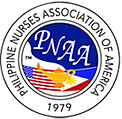Peripheral Intravenous Infiltration and Extravasation Prevention
Written by Maria Clarissa O. Trinidad
doi: https://doi.org/10.13178/jnparr. 2023.13.01.1305
Download
Abstract
Background: Infiltration related to peripheral intravenous (PIV) therapy is a common complication in the pediatric population. At the project site, despite current practices to prevent pediatric PIV infiltration, PIV infiltrations persisted.
Objective: The purpose of this quantitative quasi-experimental quality improvement project was to determine if or to what degree the implementation of the Children’s Hospitals’ Solution for Patient Safety (CHSPS) Peripheral Intravenous Infiltration and Extravasation (PIVIE) Prevention Bundle 1.0 would impact moderate to severe infiltrations when compared to current practice among Neonatal Intensive Care Unit (NICU) patients in a pediatric hospital in central California over 4 weeks.
Methods: Data on moderate to severe infiltration rates were obtained from the electronic health record. The total sample size was N = 276; n = 115 in the comparative group and n = 161 in the implementation group.
Results: A chi-square test showed a clinical and statistically significant difference in reducing moderate infiltration incident rates, X2 (1, N = 276) = 5.73, p = .017. No patients in either group had severe infiltrations during the project timeline but were organizationally required for the project.
Conclusions: Therefore, the implementation of the CHSPS’s PIVIE Bundle 1.0 may reduce moderate to severe infiltrations in this population and setting. Recommendations are to sustain the bundle and disseminate the findings to other units to decrease infiltration rates.
Keywords: CHSPS PIVIE Prevention Bundle 1.0, PIV, moderate to severe peripheral intravenous infiltration, best practices in pediatric IV, neonatal IV access

